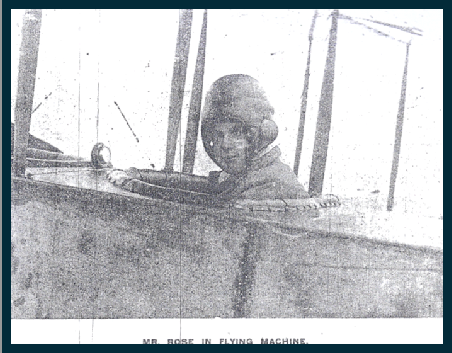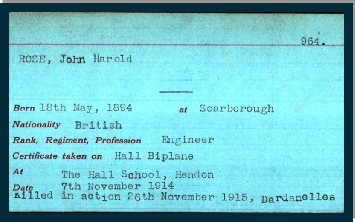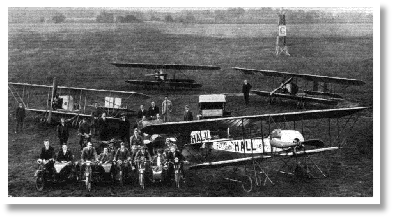Copyright © All rights reserved.




John Harold Rose
John Harold Rose was born on 18th May 1894 and his birth was registered in the Malton area. He was the son of John Harland and Mary (nee Brown) Rose who married in the Malton area in the last quarter of 1893. John Harland was the son of a prosperous Wine and Spirits merchant in Malton.
Soon after John’s birth they moved to Feilding, New Zealand , and stayed there until at least 1900 but had returned to Ryton, Old Malton by 1911, though John Harold was by then an apprentice engineer in Bradford.
1911 census resident at 41 St Marys Road Bradford
ROSE, John Harold, Boarder, Single, M, 16, 1895, Apprentice Engineer Yorks Butterwick
Prior to this he had been educated at Orleton in Scarborough, before serving a three year apprenticeship at the Scott engineering works in Bradford.

Probably John had already taken an interest in aircraft but certainly he lost little time in enrolling at the Hall Flying School in Hendon where he learnt to fly biplanes and qualified as an aviator on 7th November 1914.
His photograph appeared in the “Malton Messenger” of 7th July 1914, expressing his aim of joining the Royal Naval Flying Corps.
At Hall’s he made rapid progress and acted as an instructor, frequently taking up passengers. The photo shows pupils and staff from about this time at Ha ll’s school, Hendon. Possibly this includes John Harold.
ll’s school, Hendon. Possibly this includes John Harold.
In early April 1915 he received his commission and was appointed to East Church and by the end of the month joined Royal Naval Air Service at Dunkerque where he served for three months taking part in various successful air raids.
When R.A.J. Warneford gained a VC following his downing of the Zeppelin LZ37, it is reported that,on take off from Furnes in Belgium, Warneford was accompanied by Rose who was forced to abandon the flight due to a technical problem and that Warneford continued on his own.
In August that year he left for the Mediterranean and to take part in aerial support for the Gallipoli campaign.
The eight month campaign in Gallipoli was fought by Commonwealth and French forces in an attempt to force Turkey out of the war, to relieve the deadlock of the Western Front in France and Belgium, and to open a supply route to Russia through the Dardanelles and the Black Sea.
The Allies landed on the peninsula on 25-
Whether John Harold Rose succumbed to disease, met with an accident or was killed in action is unclear – however he died on 26th November 1915 and is buried at Lancashire Landing Cemetery on Gallipoli.
At Helles, the 29th Division landed troops at 'S,' 'V,' 'W,' 'X' and 'Y' Beaches, five small coves at or near the southern end of the peninsula. The landing at 'Y' Beach (Gurkha Bluffs) was carried out by the 1st King's Own Scottish Borderers and the Plymouth Battalion of the Royal Naval Division, but these troops were forced to re-
The greater part of the cemetery (Rows A to J and part of Row L) was made between the landing in April 1915 and the evacuation of the peninsula in January 1916. The photograph below shows the cemetery as it was in 1923 with the graves of two airmen -
He is commemorated on both Old Malton memorials.
